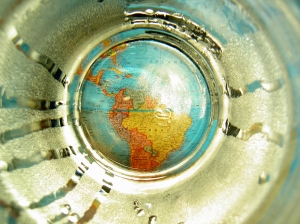The anthropocene, a proposed geologic period, represents a new and imposing time in earth’s evolution: the time in which man is the driving force. In this anthology, we aim to tackle the important questions of what the anthropocene is, how it came to be, and where to go from here. We present views of the anthropocene spanning a diverse array of fields, from geology to ethics, political anthropology to conservation, and more. We have arranged this anthology to guide the reader through a three step process to better understand our place in the world in the anthropocene.
Step 1: What is the anthropocene?
In “How the Holocene Ends“, Christian Bourgeois explains the geological evidence and gives justification for the fact that we have entered a new geological epoch. The reader will be given an understanding of what this geological evidence means now and what it will mean going forward.
In “Geology and the Anthropocene,” Ellison Jackson discusses the Geological aspect of the Anthropocene. This paper will help the reader to understand the Anthropocene from a geological perspective and the morality that comes from the Anthropocene and its effects on geology.
Step 2: How did the anthropocene come to be?
In “Physical and Human Geography in the Anthropocene,” Tiffany Pritchett discusses physical and human geography and how they are interchangeable with one another in regards to the Anthropocene. From this chapter, a reader would get a basic definition of the Anthropocene as well as a view of the Anthropocene from a physical and human relationship.
In “Political Anthropology and the Anthropocene,” Rayna Jeter concludes that in order to effectively prevent further environmental change many anthropologist believe we must first change the way we perceive the relationship between nature and human culture. The way political anthropology is conducted needs to change. The paper shows how social sciences can fit within Anthropocene research and presents why it is important to change the way humans perceive nature.
Step 3: Where do we go from here?
In “Extinction and Humanity as Biology’s Caretaker,” Michael Wolfe examines the motivations for extinction prevention and the question of how we can decide which species to save and which not to. Readers will learn about some of the underpinnings of the extinction prevention movement and will be presented with a preliminary suggested criteria for deciding which animals to protect and why.
In “Do We Save the Doomed?” Reid Butler writes an ethical discussion on whether we are morally obligated to save species in the Anthropocene. He think readers will see an unusual and opposing view to the norm. This chapter offers an opposing view to Michael Wolf’s ethical discussion of species and after reading both essays one will have a more complete view on species and their worth.
